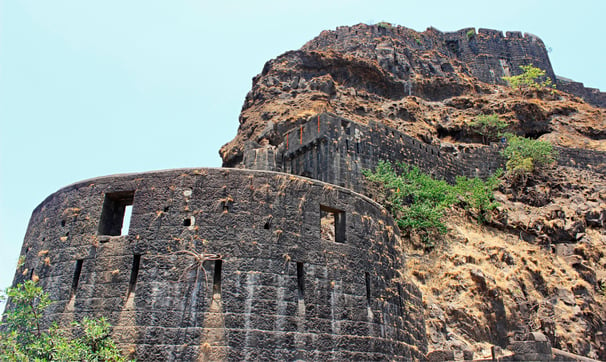Pune’s Historic Landmarks: A Glimpse into the Past
COMMUNITYEDUCATIONFEATUREDCULTURE


Pune, known as the cultural capital of Maharashtra, is not just a bustling city with modern attractions, but also a place rich in history and heritage. From its ancient forts to majestic palaces, Pune offers a glimpse into the grandeur of the past. Whether you are a history enthusiast or just looking to explore the heritage of the city, Pune’s historic landmarks will transport you back in time. Let’s take a journey through some of the most iconic historical sites in Pune: Shaniwar Wada, Aga Khan Palace, and Osho Ashram.
1. Shaniwar Wada: The Majestic Seat of the Peshwas
Location: Shaniwar Peth, Pune
Significance: The Shaniwar Wada is a grand symbol of Pune’s royal Maratha history and serves as a major tourist attraction. Built in 1732 by Baji Rao I, the Peshwa of the Maratha Empire, this fortress-palace was once the residence of the Peshwa rulers. The fort complex includes majestic gates, large walls, and exquisite wooden palaces, which depict the grandeur of the Maratha dynasty.
Why Visit:
While most of the palace was destroyed in a fire in 1828, the remaining ruins still tell tales of Pune’s royal past. Visitors can explore the historic Shaniwar Wada and learn about its cultural significance, such as the role it played in the Maratha empire’s administration and governance. The fort also has several legends associated with it, including the ghost stories that haunt the place, making it a fascinating spot for history lovers and thrill-seekers alike. The sound-and-light show held every evening is a must-see to understand the significance of the Wada's history.
2. Aga Khan Palace: A Landmark of Indian Freedom Struggle
Location: Khadakwasla, Pune
Significance: The Aga Khan Palace, built in 1892 by Sultan Muhammad Shah Aga Khan III, is not only a splendid architectural marvel but also a significant landmark in India’s freedom struggle. The palace became an important site during the Quit India Movement when Mahatma Gandhi, his wife Kasturba Gandhi, and other leaders were imprisoned here by the British in 1942. The palace served as a place of detention for these key leaders, and it was here that Kasturba Gandhi and Mahatma Gandhi’s secretary, Mahadev Desai, passed away.
Why Visit:
The palace is a symbol of the sacrifices made for India’s independence and is now a museum that showcases photographs, letters, and other relics related to Gandhi's life and his time spent in the palace. The well-maintained gardens around the palace also make it an ideal spot for a peaceful stroll. A visit to the Aga Khan Palace is a must for those interested in India’s freedom struggle and its historical landmarks.
3. Osho Ashram: A Spiritual Haven
Location: Koregaon Park, Pune
Significance: The Osho Ashram, or the Osho International Meditation Resort, is one of Pune’s most unique landmarks. Founded by the controversial spiritual guru, Osho Rajneesh, in the 1970s, the Ashram became a center of spiritual teachings, meditation, and wellness. Osho’s teachings attracted followers from all over the world, making Pune a global center for spiritual seekers.
Why Visit:
While Osho’s controversial life has attracted a lot of media attention, his ashram remains a place of tranquility and healing for those looking to explore meditation and inner peace. The Ashram offers various meditation courses and spiritual teachings, with lush green gardens, pools, and serene environments that make it one of the most peaceful places in the city. Visitors can explore the Ashram and take part in activities like meditation, yoga, and therapies designed to improve mental and physical well-being.
4. Other Notable Historical Landmarks in Pune
While Shaniwar Wada, Aga Khan Palace, and Osho Ashram are the most popular, Pune is also home to several other historical landmarks that are worth visiting. Some of these include:
Sinhagad Fort: A hill fort with a rich history dating back to the Maratha Empire. It offers a beautiful panoramic view of the surrounding area and is famous for the Battle of Sinhagad in 1670.
Raja Dinkar Kelkar Museum: This museum houses an extensive collection of artifacts, including sculptures, paintings, and historical objects that showcase Pune’s cultural heritage.
Pataleshwar Cave Temple: A rock-cut temple dedicated to Lord Shiva, this ancient site dates back to the 8th century and is a serene place to visit for a spiritual journey.
Conclusion: A Rich Tapestry of Pune’s History
Pune, with its rich cultural and historical legacy, offers a treasure trove of landmarks that provide insight into the city's past. Whether it’s the grandeur of the Peshwa rulers at Shaniwar Wada, the legacy of India’s freedom struggle at Aga Khan Palace, or the spiritual teachings at Osho Ashram, each of these landmarks tells a unique story. Pune’s historic landmarks not only connect visitors to the city’s past but also provide a glimpse into the evolution of its culture and heritage.
If you’re a history enthusiast or simply someone looking to learn more about Pune’s vibrant history, a visit to these iconic landmarks will undoubtedly leave you captivated by the tales they hold. Embark on your journey through time and uncover the rich cultural fabric that makes Pune a unique and cherished city.


